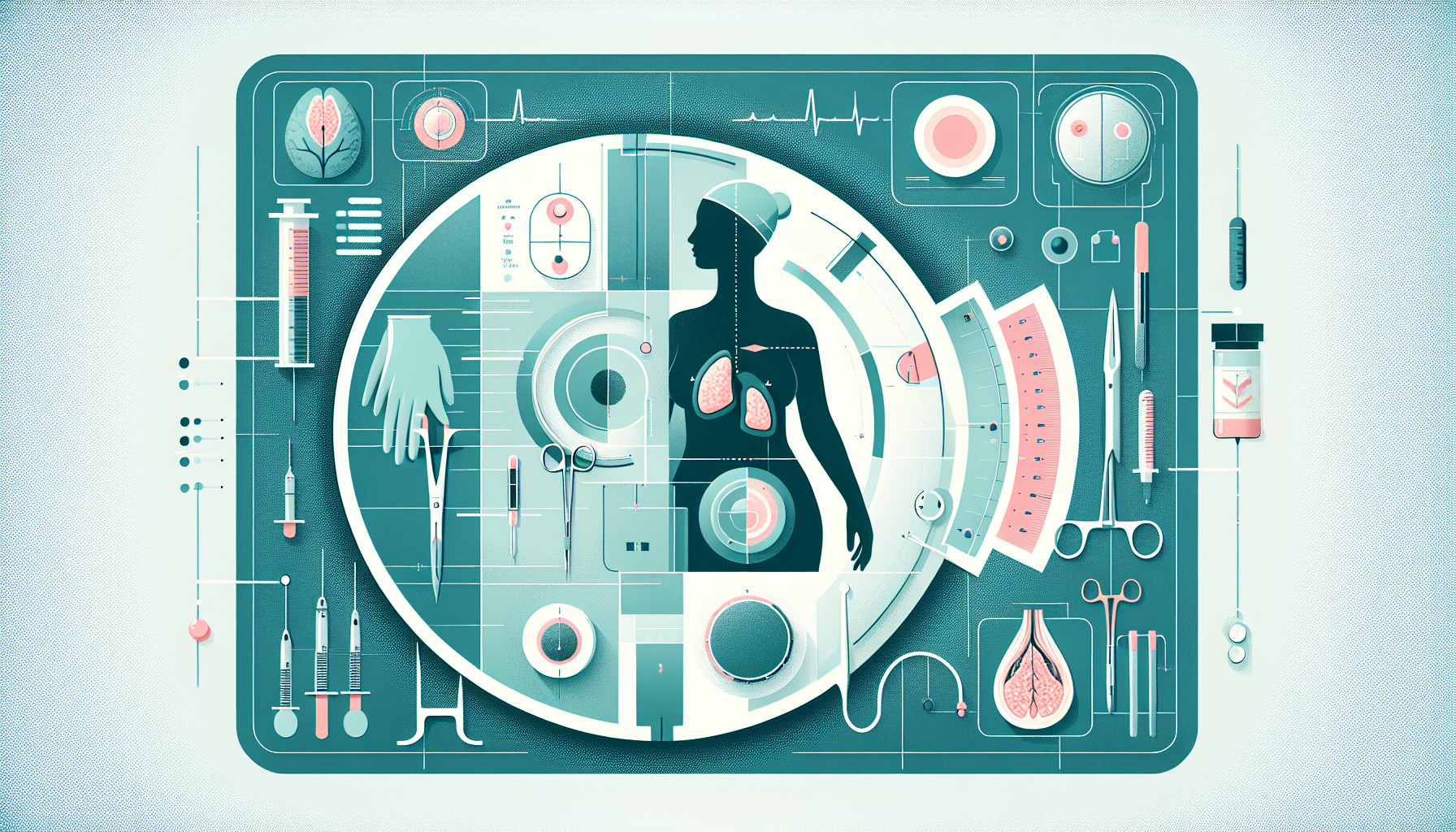Our Summary
This research paper discusses the modern techniques used by breast surgeons in treating breast cancer. In the past, the most common procedures were modified radical mastectomy (removal of the entire breast and some underarm lymph nodes) and lumpectomy (removal of the tumor and some surrounding tissue) combined with a sentinel lymph node biopsy (examination of the first lymph node to which cancer is likely to spread) and postoperative radiation.
However, today’s methods have evolved to include options that not only effectively treat the cancer but also result in better aesthetic outcomes for the patient. These include skin- and nipple-sparing mastectomies, which preserve the skin and nipple, and immediate reconstruction, where the surgeon rebuilds the breast right after mastectomy.
Another approach is oncoplastic surgery, which involves removing the cancer and reshaping the remaining breast tissue to improve its appearance post-surgery. The paper provides an overview of these advanced surgical approaches for breast cancer treatment.
FAQs
- What are some modern surgical approaches for breast cancer treatment?
- What is a nipple-sparing mastectomy and how does it improve cosmesis?
- What are oncoplastic procedures and how do they contribute to better postoperative breast shape?
Doctor’s Tip
A doctor may advise a patient undergoing a mastectomy to consider options for immediate reconstruction, such as skin- and nipple-sparing mastectomies, to improve cosmesis and overall satisfaction with the outcome of the surgery. It is important for patients to discuss these options with their surgeon to determine the best course of action for their individual situation. Additionally, patients should follow postoperative care instructions carefully to promote healing and reduce the risk of complications. Regular follow-up appointments with the medical team are also important for monitoring progress and addressing any concerns.
Suitable For
Patients who are typically recommended mastectomy include those with:
- Early-stage breast cancer that has not spread beyond the breast tissue
- Large or multiple tumors in the breast
- Inflammatory breast cancer
- BRCA gene mutation carriers with a high risk of developing breast cancer
- Recurrent breast cancer after previous lumpectomy and radiation therapy
- Patients who prefer or require prophylactic mastectomy due to a high risk of developing breast cancer.
Timeline
Before mastectomy:
Diagnosis: The patient is diagnosed with breast cancer through imaging studies, biopsies, and other tests.
Consultation: The patient meets with their healthcare team, including a breast surgeon, oncologist, and plastic surgeon, to discuss treatment options.
Preoperative preparation: The patient undergoes preoperative tests and consultations to ensure they are healthy enough for surgery.
Decision-making: The patient and their healthcare team decide on the best surgical approach for the patient’s specific case, which may include a mastectomy.
After mastectomy:
Surgery: The patient undergoes the mastectomy procedure, which involves the removal of the breast tissue.
Recovery: The patient stays in the hospital for a few days to recover from surgery and manage any pain or discomfort.
Follow-up care: The patient receives follow-up care, which may include physical therapy, oncology appointments, and consultations with a plastic surgeon for reconstruction options.
Reconstruction: If the patient opts for reconstruction, they may undergo additional surgeries to reconstruct the breast mound using implants or tissue from another part of the body.
Emotional support: The patient may experience a range of emotions following mastectomy, and may benefit from counseling, support groups, or other forms of emotional support.
Surveillance: The patient continues to have regular follow-up appointments to monitor for any signs of recurrence or complications.
Overall, the timeline for a patient before and after mastectomy involves a series of steps to diagnose, treat, and support the patient through their breast cancer journey.
What to Ask Your Doctor
- What type of mastectomy procedure do you recommend for my specific case?
- What are the potential risks and complications associated with mastectomy surgery?
- Will I need additional treatments, such as radiation therapy or chemotherapy, after the mastectomy?
- How long is the recovery period after mastectomy surgery?
- What are my options for breast reconstruction following mastectomy?
- Will I still be able to feel sensation in my breast after mastectomy?
- How will the appearance of my breast(s) be affected by the mastectomy procedure?
- Are there any long-term effects or considerations I should be aware of after mastectomy surgery?
- How often will I need follow-up appointments and monitoring after mastectomy?
- Are there any lifestyle changes or limitations I should be aware of following mastectomy surgery?
Reference
Authors: Cil TD, McCready D. Journal: Clin Plast Surg. 2018 Jan;45(1):1-11. doi: 10.1016/j.cps.2017.07.002. Epub 2017 Oct 5. PMID: 29080650
